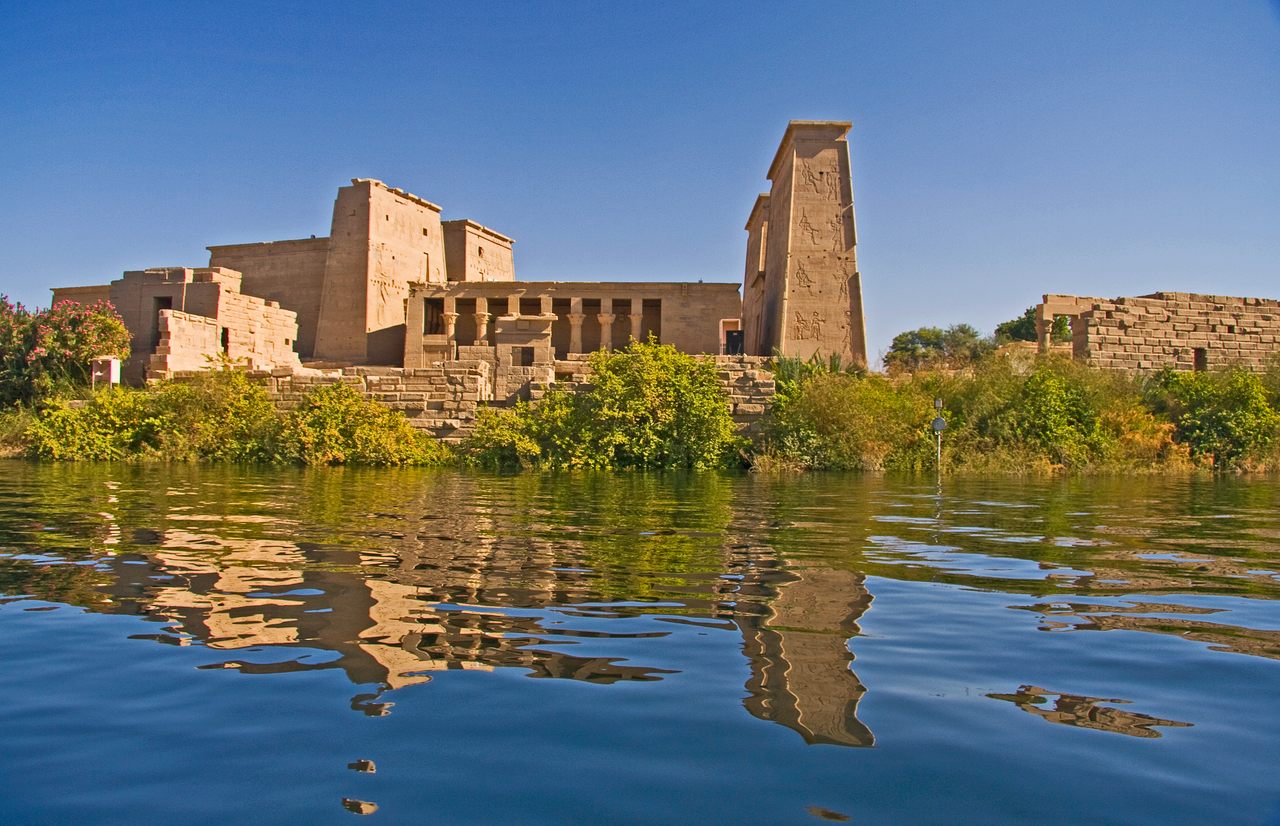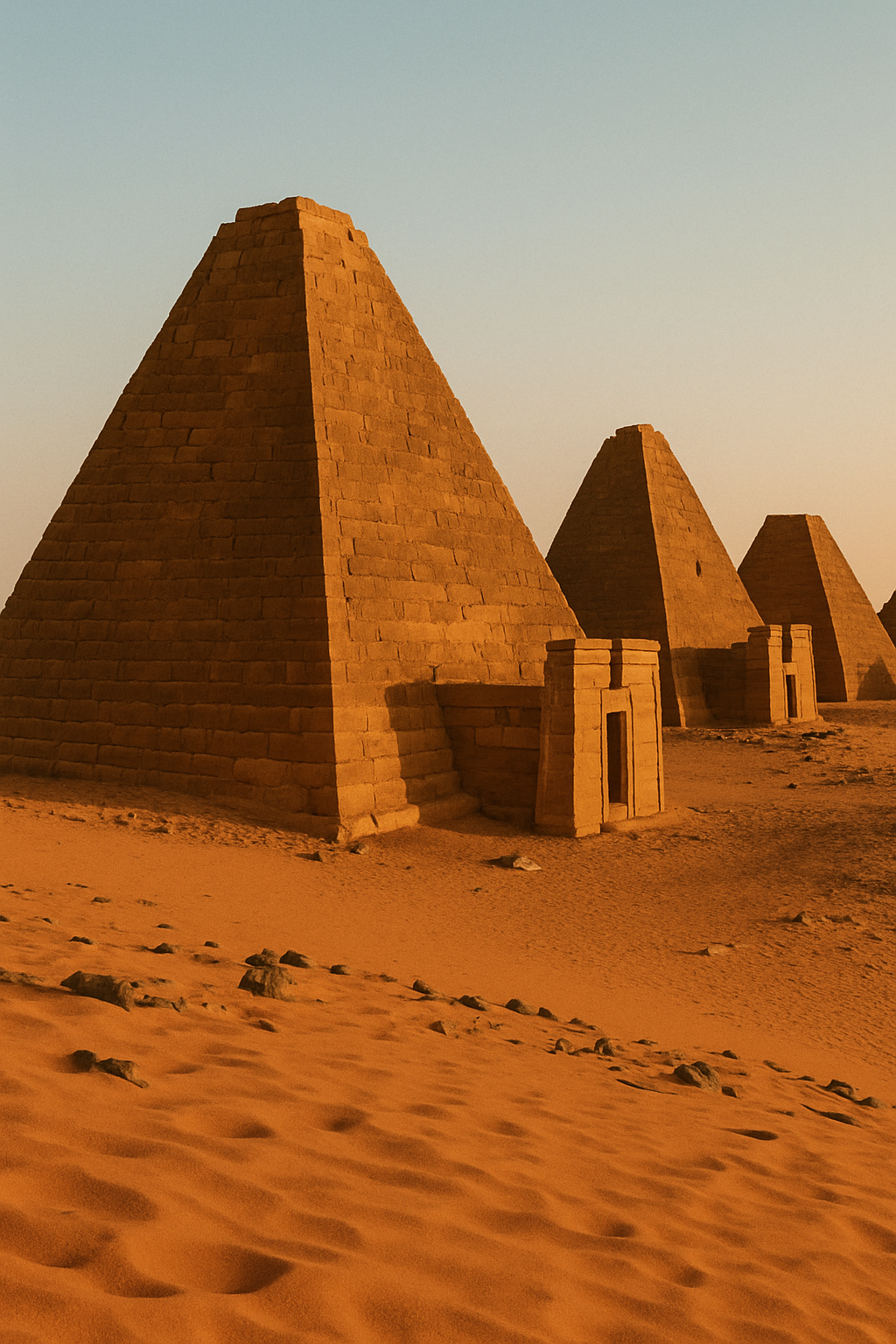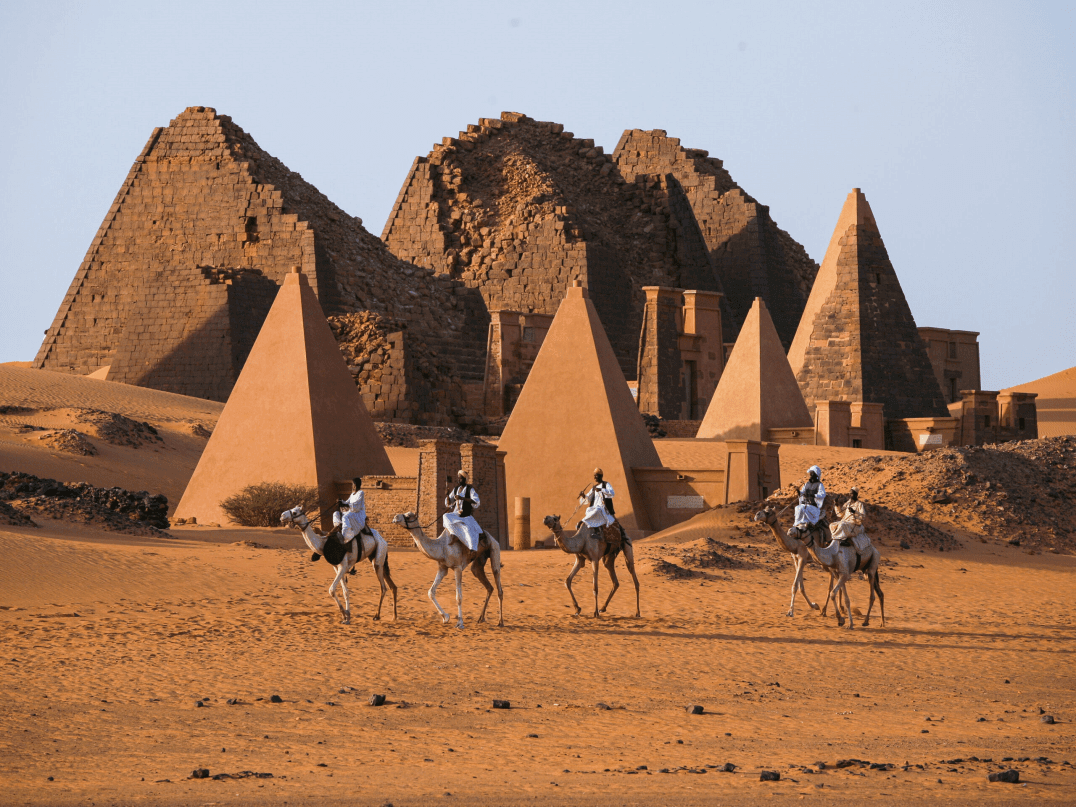In the heart of northeastern Africa, beyond the Nile’s gentle bends and the shifting sands of the Nubian Desert, lies a forgotten kingdom that defies every expectation — Meroë. Once the glittering capital of the Kingdom of Kush, this sacred city is home to over 200 pyramids, a script still undeciphered, and tales of queens who didn’t just stand beside kings — they ruled as pharaohs. Here, history flips the script. In Meroë, queens ruled as pharaohs, temples stood tall with lion-headed gods, and pyramids multiplied across the desert like stars. This is not the Egypt you’ve heard of — this is Africa, unfiltered.
Between the 8th century BCE and the 4th century CE, Meroë thrived as a center of wealth, power, and innovation. Its monarchs — many of them women — led armies, brokered trade with Rome and India, kept their African identity sacred and built a dynasty that left its mark not with marble, but with sun-scorched stone.
More than 200 pyramids scatter the royal necropolis of Meroë — smaller and steeper than their Egyptian cousins, but no less magnificent. These were tombs of kings and queens who ruled a vast empire. The pyramids are inscribed in Meroitic script, one of the oldest written languages in Africa — still undeciphered. Who will crack the code of these African monarchs?
The word “pharaoh” conjures images of male rulers, but in Meroë, it was often the Kandake— queens of power and purpose — who led. The Kandake — or Candace — were powerful Nubian queens who ruled alone or as co-regents. They were warrior leaders, strategists, and symbols of divine authority. In a world dominated by male pharaohs, Meroë crowned women as sovereigns of state and sword.
Roman historians wrote in awe of one such queen — Kandake Amanirenas — who led a fierce resistance against Rome and left Emperor Augustus retreating from the Nile. When Rome tried to conquer Kush, she led an army, stormed Roman garrisons, and famously negotiated peace with Augustus — on her terms. These weren’t consorts. These were commanders.
Risk level
As of May 2025, the U.S. Department of State advises against all travel to Sudan, assigning it a Level 4: Do Not Travel status. This advisory is due to ongoing armed conflict, civil unrest, crime, kidnapping, and the risk of wrongful detention. The security situation remains volatile, with active hostilities in various regions, including Khartoum.
Given the current security concerns, it is strongly recommended to postpone any travel plans to Sudan until conditions improve.
If you’re interested in exploring ancient African civilizations, consider alternative destinations with similar historical significance but safer travel conditions. For instance:
• Egypt: Home to the renowned pyramids of Giza and numerous other archaeological sites.
• Ethiopia: Offers the rock-hewn churches of Lalibela and ancient ruins in Axum.
⸻
Why Visit Meroë with Trailblazer Travelz?
• Stand beneath ancient pyramids without the crowds — where silence speaks louder than stone.
• Trace the royal legacy and lineage of Africa’s Black pharaohs and fierce queens.
• Explore desert landscapes with local guides who carry the stories of Nubia in their blood.
• Walk among untouched pyramids in near solitude
• Experience storytelling, architecture, and rituals passed down for millennia
• Support local communities and historians preserving this heritage
⸻
Best Time to Visit
November to March — Dry season, with pleasant temperatures for exploring the desert sites and royal tombs. This is Sudan’s cool, dry season — perfect for exploring desert sites, especially during golden-hour light when the pyramids seem to glow from within.
⸻
Don’t Miss
• Sunrise or sunset at the Meroë pyramids — a golden, haunting light that feels like the gods are watching.
• The ruins of Naqa and Musawwarat es-Sufra, where ancient temples reveal Sudan’s blend of Egyptian, African, and Greco-Roman traditions.
• Sunrise at the Royal Necropolis — golden sands, haunting silence, ancient majesty
• Local Nubian storytelling evenings — oral history brought to life by moonlight
⸻
Ready to Walk in the Footsteps of Queens?
Meroë isn’t a relic — it’s a revelation. It’s a place where Africa’s power, pride, and brilliance aren’t hidden in museums — they’re standing in the sand, waiting. In Meroë the past doesn’t just whisper — it reigns.






